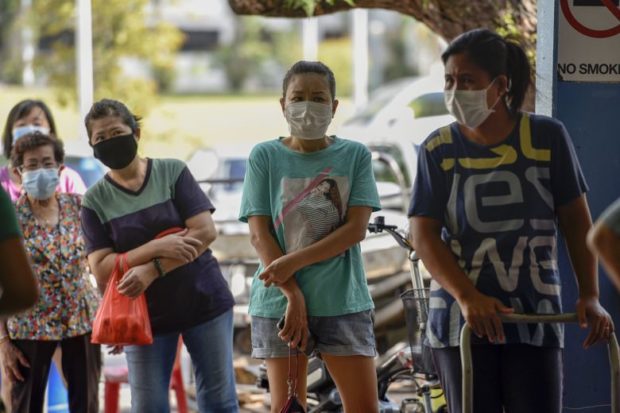
National Centre for Infectious Diseases executive director Leo Yee Sin called on people to protect themselves, those around them and the community by being socially responsible. The Straits Times/Asia News Network/DESMOND WEE
SINGAPORE — Asymptomatic persons with the coronavirus disease are more common than was previously thought – some research says potentially as many as 55 percent to 70 percent of infections – and they can go on to infect others without anyone ever finding out.
It is one of three reasons that make COVID-19 such a challenging disease to tackle, National Center for Infectious Diseases executive director Leo Yee Sin told The Straits Times Monday.
Another reason is that COVID-19 manifests itself as an innocuous and mild illness, but has high virus secretion at its onset.
“This causes infected individuals to misjudge the seriousness of their illness, and have a tendency to continue routine activities without realizing the danger of spreading the infection,” she said.
Third, as Sars-CoV-2 is a novel pathogen, the whole of Singapore is susceptible to it.
“Any one of us can be infected and, if we are not careful, can serve as a transmitter passing on the virus to others. When that happens, those most at risk are the people close to us, such as family members, colleagues and close friends,” said Professor Leo.
She called on people to protect themselves, those around them and the community by being socially responsible.
This means remaining at home, not paying visits to others and avoiding older family members, who are most at risk of complications from the disease.
While it was previously unclear if asymptomatic spread is an issue, this has changed as scientists learn more about the virus. Newer findings now suggest that those who do not display symptoms of the disease could be spreading it widely without knowing it.
Dr. Leong Hoe Nam, an infectious diseases expert who practices at Rophi Clinic at Mount Elizabeth Novena Hospital, said that studies done in the United States, China, and Italy show that more than half to about 70 percent of those with COVID-19 are either asymptomatic or have minimal symptoms, but they can shed the virus for up to four weeks.
He said this could mean that circuit breakers may have to be in force beyond May 4 to really stem disease transmission as these individuals would need about six weeks (an incubation period of up to 14 days plus four weeks) to stop being infectious.
Dr Leong also said the number of asymptomatic persons with COVID-19 here would add to herd immunity, but there had to be a large enough infected population for herd immunity to be acquired.
“At this rate, it could take at least two to three years for that to happen,” he said.
People should instead adhere to the strict circuit breaker measures in place to curtail such potentially widespread community transmissions.
Associate Professor Hsu Li Yang, program leader of the infectious diseases program at the National University of Singapore’s Saw Swee Hock School of Public Health, said people who do not show symptoms throughout their infection would escape detection.
However, it is known that a significant proportion of such asymptomatic infections exists because of the extensive testing done on cruise ships such as the Diamond Princess and in countries such as Iceland, South Korea and Germany, and when work and family clusters are investigated, including in China.
“We know from work by MOH (Ministry of Health) that pre-symptomatic transmission of the virus can occur, and this is possibly also true from asymptomatic cases,” said Prof Hsu.
There have now been almost 3,000 cases of COVID-19 here.
An article in the medical journal BMJ noted that around four in five coronavirus infections in China cause no illness.
On April 1, China began publishing daily figures on the number of new asymptomatic coronavirus cases. Its National Health Commission reported that about 78 percent, or 130, of 166 new infections identified in the 24 hours to the afternoon of April 1 were asymptomatic.
The top US infectious diseases expert, National Institute of Allergy and Infectious Diseases director Anthony Fauci, also noted about a week ago that rough estimates indicate that about 25 percent to 50 percent of those with COVID-19 may not show any symptoms. It is also why masks or face coverings are now advised so that people can use them to block the droplets that escape from their mouths when they talk or exhale.
What is also now clear about the disease is that it is highly infectious at the start, when a person has yet to show symptoms or is showing very mild symptoms. This means he can make others very sick when he is only mildly ill.
This is contrary to common sense thinking to stay away from others only when someone is very sick and is one of the reasons the authorities have called for the public to stay home.